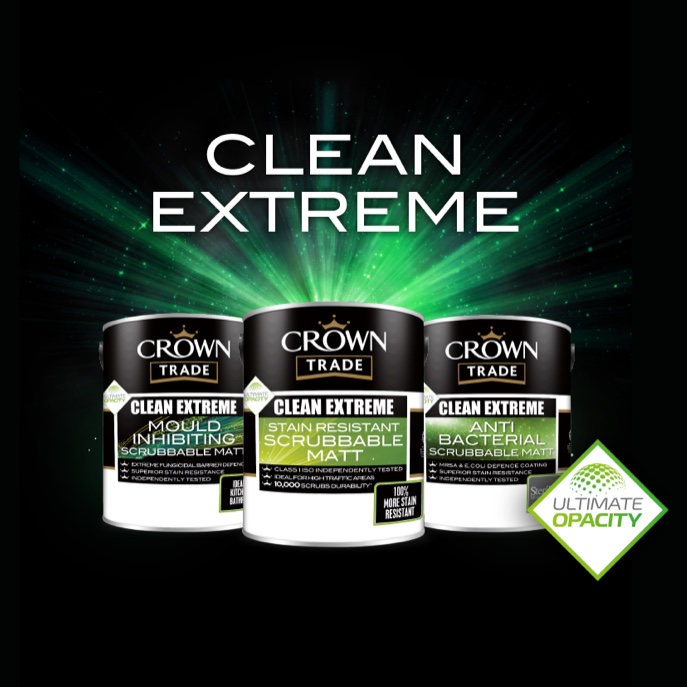Industry Product
Common Problems With Exterior Painting
1 January 2021
BLISTERING
Bubbles resulting from localised loss of adhesion, and lifting of the paint film from the underlying surface.
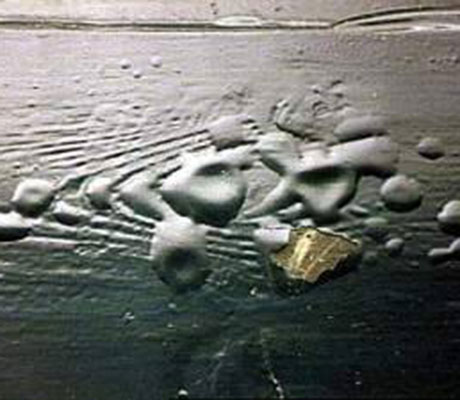
POSSIBLE CAUSES
Painting a warm surface in direct sunlight. Application of solventbased paint over a damp or wet surface. Moisture escaping through the exterior walls (less likely with water-based paint than with solvent-based). Excess resin on areas on timber. Underbound / powdery substrate beneath older paint coatings
SOLUTION
If blisters originate at the substrate, try to remove the source of moisture. Ensure any underlying chalky / powdery surfaces are fully stabilised. If blisters do not go all the way down to the substrate, remove them by scraping, and identify and cure any underlying defects. Remove as much resin as possible. Consider using a heat gun, and wipe away any excess resin prior to applying a knotting solution. In extreme cases resinous knots may have to be removed and filled.
CISSING
The failure of paint to form a continuous film by forming into droplets, leaving small round bare patches.
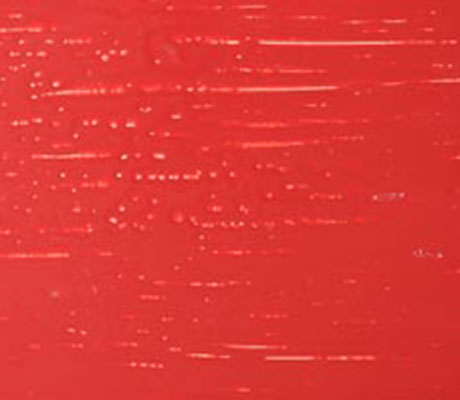
POSSIBLE CAUSES
Painting greasy, waxy/oily surfaces
Painting very smooth shiny surfaces
SOLUTION
Thorough washing and rinsing of surface, by using hot water and detergents
Thoroughly abrade to remove sheen
WRINKLING
A rough, crinkled paint surface occurring when paint forms a “skin”.
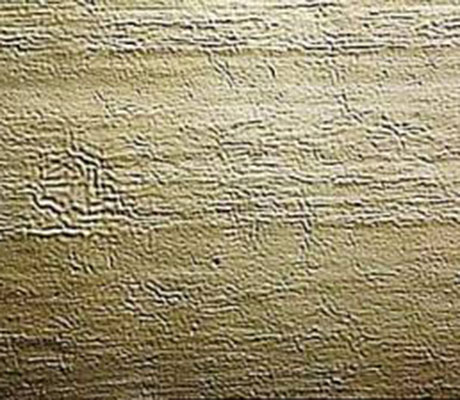
POSSIBLE CAUSES
Paint applied too thickly (more likely when using solvent-based paints).
Painting a hot surface or in very hot weather.
Exposure of uncured paint to rain, dew, fog or high humidity levels.
Applying top coat of paint to insufficiently dried first coat.
Applying a paint which uses a stronger solvent, such as chlorinated rubber paint on top of a conventional coating (pickling)
SOLUTION
Scrape or sand substrate to remove wrinkled coating. Repaint, applying an even coat of top quality exterior paint. In some instances the underying paint could still be soft and will need further time to dry before repainting is undertaken.
Apply paints at the manufacturer’s recommended spread rate (two coats at the recommended spread rate are better than one thick coat). When painting during cool or damp weather, allow extra time for the paint to dry completely.
RAIN SPOTTING
The damage and cracking of the painted surface usually caused by rainfall, before the paint has sufficiently dried.
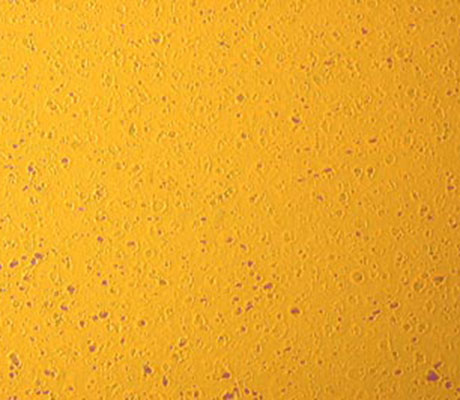
POSSIBLE CAUSES
Applying paint in poor weather conditions.
SOLUTION
Wet abrade the affected area to a smooth finish prior to re-painting.
In poor weather conditions and during the winter months consider using the Sandtex Trade 365 All Weather Product Range.
EFFLORESCENCE
Chemically active surfaces producing a crystallising effect, white salt deposits, leached from mortar or masonry as water passes through it.
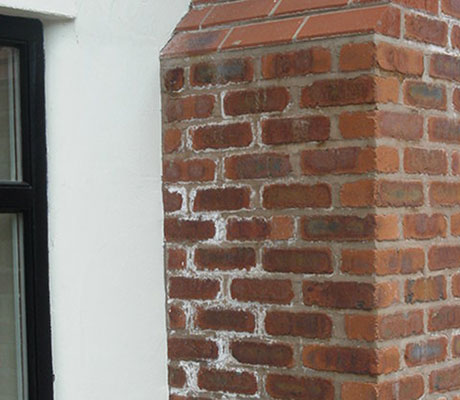
POSSIBLE CAUSES
Salts originating from the bricks, concrete blocks, concrete, etc. are brought to the surface by water drying out
Excess moisture escaping through the exterior masonry walls from behind.
Active efflorescence is likely to push off any type of sealer or paint coating.
Ground salts contamination due to a broken / missing damp proof course.
SOLUTION
If excess moisture is the cause, eliminate the source of the moisture.
If moist air is originating inside the building, consider installing vents or exhaust fans, especially in kitchen, bathroom and laundry areas.
Remove the efflorescence and all other loose material with a stiff bristle brush.
Allow to completely dry out and continue brushing and removing the salts until they cease to appear. The substrate may be washed using a dilute vinegar solution in order to neutralise the alkalinity. Once dry, repaint with any of our Sandtex Trade Exterior Finishes.
SAPONIFICATION
Colour loss and overall deterioration of paint film on fresh masonry.
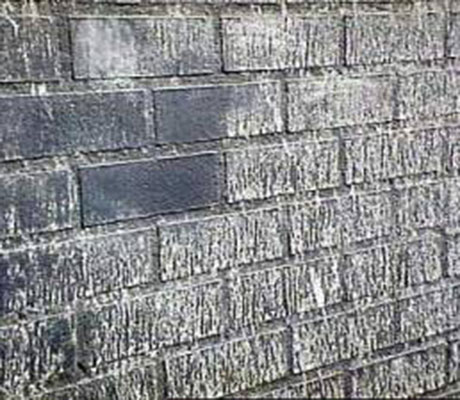
POSSIBLE CAUSES
Solvent-based paint or water-based paint was applied to excessively damp masonry. Damp masonry surfaces are alkali active.
Fresh masonry is likely to contain lime which is extremely alkaline.
Until the lime has a chance to react with carbon dioxide from the air, the alkalinity of the masonry remains so high that it can attack the integrity of the paint film.
Strong alkali can attack the resins in some solvent borne paints and may also attack certain pigments causing colour to fade
SOLUTION
Ensure that any defects which all allow moisture into the substrate that are fully cured.
Apply an alkali resistant paint.
If it is not possible to allow sufficient drying of the substrate, use a moisture vapour permeable Sandtex Trade product and avoid using strong colours.
POOR GLOSS RETENTION
Deterioration of the paint film, resulting in excessive or rapid loss of lustre of the top coat.
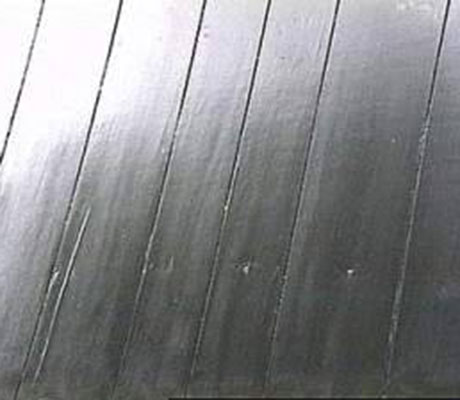
POSSIBLE CAUSES
Use of an interior paint outdoors.
Use of lower quality paint.
Use of solvent based gloss in cold / damp / humid conditions
SOLUTION
While all types of paint will lose some degree of lustre over time, lower quality paints will generally lose gloss much earlier than better grades.
The Sandtex Trade paints are formulated so that the binder and pigments are extremely resistant to UV formulation.
Where there is a risk of low temperatures / high levels of humidity use the Sandtex Trade 365 All Weather Range.
ORGANIC GROWTH
Black, grey or brown areas of fungal or algal growth on the surface of paint or sealant.

POSSIBLE CAUSES
Fungus forms most often on areas that tend to be damp, and receive little or no direct sunlight (north facing walls and the underside of eaves are particularly vulnerable). Algae forms in the presence of light and moist environments.
Use of a lower quality paint, which may have an insufficient amount of fungicide or algicide.
Painting over a substrate or coating on which fungus or algae has not been removed.
SOLUTION
Test to distinguish fungus or algae from dirt by applying a few drops of Sandtex Trade Fungicidal Solution to the discoloured area. If it disappears, it is probably fungus or algae.
Treat the contamination with Sandtex Trade Fungicidal Solution and leave on for 20 minutes, applying more as it dries. Wear goggles and rubber gloves. Then scrub and rinse the area with a stiff bristle brush.
In severe instances a second application of Sandtex Trade Fungicidal Solution may be needed.
COLD WEATHER APPLICATION
Slow drying, cracking, poor paint film integrity, paint washing off days after application.
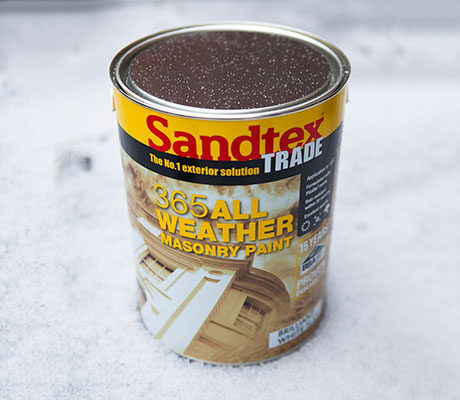
POSSIBLE CAUSES
Applying water based paint in low temperature (usually below 5-8°C)
Applying paints in extremely damp or humid conditions
Applying water based paints under the above two conditions can delay the drying process and ultimately affect the integrity of the paint film
SOLUTION
When low temperatures / poor conditions are likely, use 365 All Weather range of products
CHALKING
Formation of fine powder on the surface of the paint film during weathering which can cause colour fading. Although some degree of chalking is a normal, desirable way for a paint film to wear, excessive film erosion can result from heavy chalking.
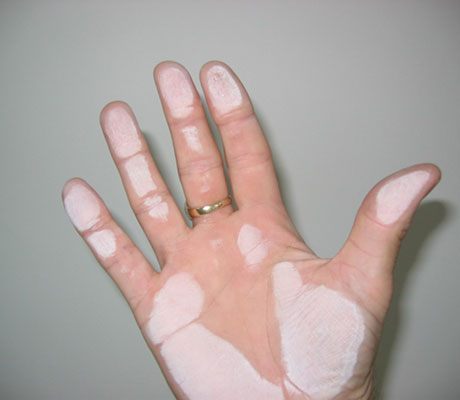
POSSIBLE CAUSES
Use of a low-grade, highly pigmented paint.
Use of an interior paint for an outdoor application.
In some instances, paints are formulated to chalk naturally in order to
provide self cleaning properties.
SOLUTION
First, remove as much of the chalk residue as possible, scrubbing with a stiff bristle brush (not a wire brush) and then rinse thoroughly.
Check for any remaining chalk by running a hand over the surface after it dries. If noticeable chalk is still present use Sandtex Trade Stabilising Solution, then repaint with any of the Sandtex Trade Masonry range. If little or no chalk remains and the old paint is sound, no priming is necessary.
CRACKING
The splitting of a dry paint film through at least one coat, which will lead to complete failure of the paint. Early on, the problem appears as hairline cracks; later, flaking of paint chips occurs.
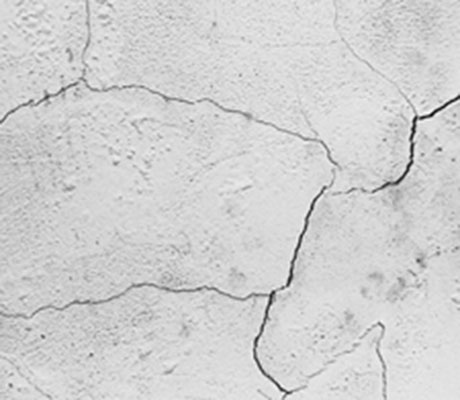
POSSIBLE CAUSES
Use of a lower quality paint that has inadequate adhesion and flexibility.
Overthinning the paint or spreading it too thin.
Poor surface preparation, especially when the paint is applied to bare wood
without priming.
Painting under excessively cool or windy conditions that make water-base
paint dry too fast.
SOLUTION
It may be possible to correct cracking that does not go down to the substrate by removing the loose or flaking paint with a scraper or stiff bristle brush (not wire), sanding to feather the edges, priming any bare spots and repainting.
If the cracking goes down to the substrate remove all of the paint by scraping, sanding and/or use of a heat gun. Then prime and repaint with a quality exterior water-based paint.
FLAKING
The splitting of a dry paint film through at least one coat, which will lead to complete failure of the paint. Early on, the problem appears as hairline cracks; later, flaking of paint chips occurs.
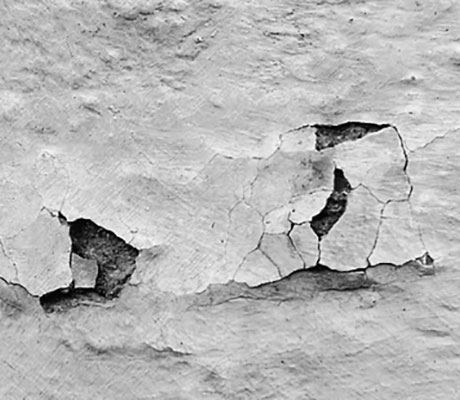
POSSIBLE CAUSES
Use of a lower quality paint that has inadequate adhesion and flexibility.
Overthinning the paint or spreading it too thin.
Poor surface preparation, especially when the paint is applied to bare wood
without priming.
Painting under excessively cool or windy conditions that make water-based
paint dry too fast.
SOLUTION
It may be possible to correct cracking that does not go down to the substrate by removing the loose or flaking paint with a scraper or stiff bristle brush (not wire), sanding to feather the edges, priming any bare spots and repainting.
If the cracking goes down to the substrate remove all of the paint by scraping, sanding and/or use of a heat gun. Then prime and repaint with a quality exterior water-based paint.
CHALK RUN DOWN
The washing down of chalk from an excessively eroding paint onto another area below (a brick foundation, for example), ruining its appearance (see Chalking).

POSSIBLE CAUSES
Use of a lower quality, highly pigmented paint.
Use of an interior paint for an outdoor application.
Over dilution of masonry coating
SOLUTION
Remove as much of the chalk residue as possible (see Chalking) using a stiff bristle brush, then apply Sandtex Trade Stabilising Solution.
If the affected area dries to a different colour, consider re-painting.
DIRT PICK UP
Accumulation of dirt, dust particles and/or other debris on the paint film; may resemble fungus or algae.
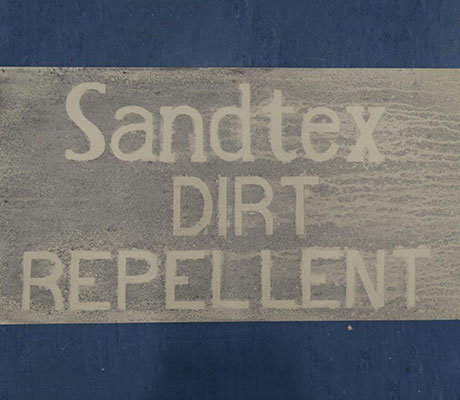
POSSIBLE CAUSES
Use of a low quality paint, especially lower grades of satin types.
Air pollution, car exhaust fumes and flying dust collecting on houses.
Poor building designs / detailing
SOLUTION
Heavier dirt accumulations may require the use of a power washer. While dirt pickup can’t be eliminated entirely, superior grade paints typically offer superior dirt pickup resistance and washability.
Also, higher gloss paints are more resistant to dirt pickup than matt paints, which are more porous and can more easily entrap dirt.
Regular wash down will give longevity to the paint film.
For exterior masonry use Sandtex Trade Dirt Repellent (now with Coloured Indicator)
LAPPING/FLASHING
Appearance of a denser colour or higher gloss where wet and dry layers overlap during paint application.
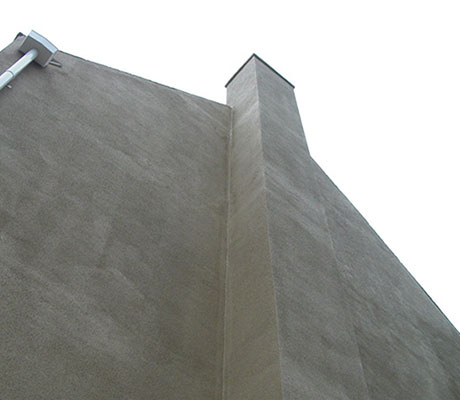
POSSIBLE CAUSES
Failure to maintain a “wet edge” when applying paint.
Applying 1 coat of masonry paint where a 2 coat system is specified. Where overlap occurs, these areas in effect receive 2 coats and therefore uneven durability results.
SOLUTION
Maintain a wet edge when painting by applying paint toward the unpainted area and then back into the just painted surface. This technique (brushing from “wet to dry” rather than vice versa) will produce a smooth uniform appearance.
It is also wise to minimise the area being painted, and plan for interruptions at a natural break, such as a window, door or corner (especially important when applying stain to bare wood).
Ensure the specified number of coats is applied.
POOR COLOUR RETENTION/FADING
Premature and/or excessive lightening of the paint colour, which often occurs on surfaces with sunny south facing exposure. Fading/poor colour retention can also be a result of chalking of the coating.
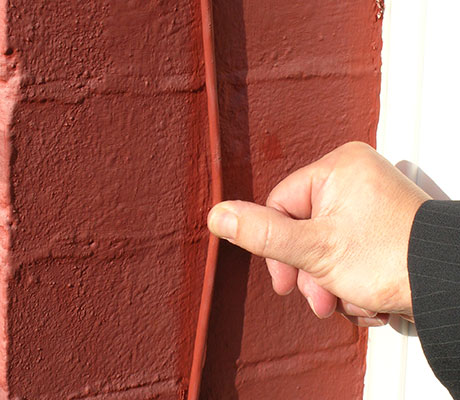
POSSIBLE CAUSES
Use of an interior grade of paint for an outdoor application.
Use of lower quality paint, leading to rapid degradation (chalking) of the paint film.
Use of a paint colour that is particularly vulnerable to UV radiation (most notably certain bright reds, blues, and yellows).
Tinting an exterior grade paint using interior grade colourant. For instance, tinting a masonry paint to a vinyl matt colour formulation
SOLUTION
When fading/poor colour retention is a result, it is necessary to remove as much of the chalk as possible (see Chalking). In repainting, be sure to use a quality exterior house paint in colours recommended for exterior use.
NAIL HEAD RUSTING
Reddish-brown stains and spots on the paint surface.
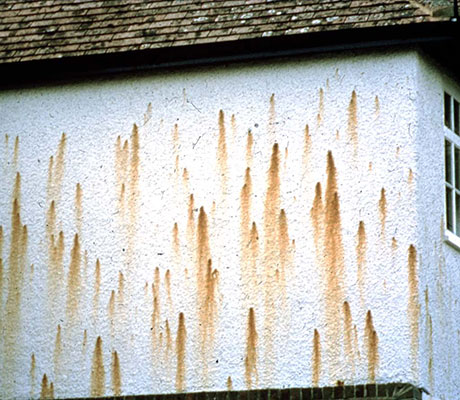
POSSIBLE CAUSES
Non-galvanised iron nails have begun to rust, causing bleed-through to the top coat.
Non-galvanised iron nails have not been countersunk and filled over.
Galvanised nailheads have begun to rust after being damaged.
SOLUTION
When painting new exterior surfaces where non-galvanised nails have been used, it is advisable to first countersink the nailheads, then seal them with a top quality primer.
Each nailhead area should be spot primed, then painted with a quality water-based coating. When repainting exteriors where nailhead rusting has occurred, sand the nailheads, then follow the same surface preparation procedures as for new construction.

